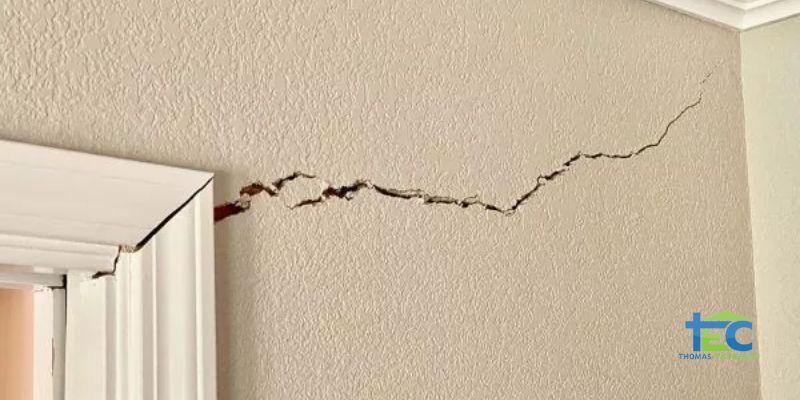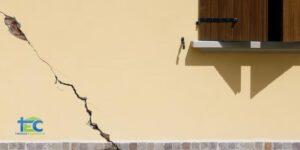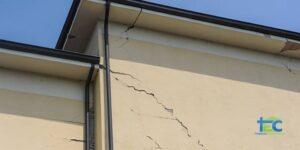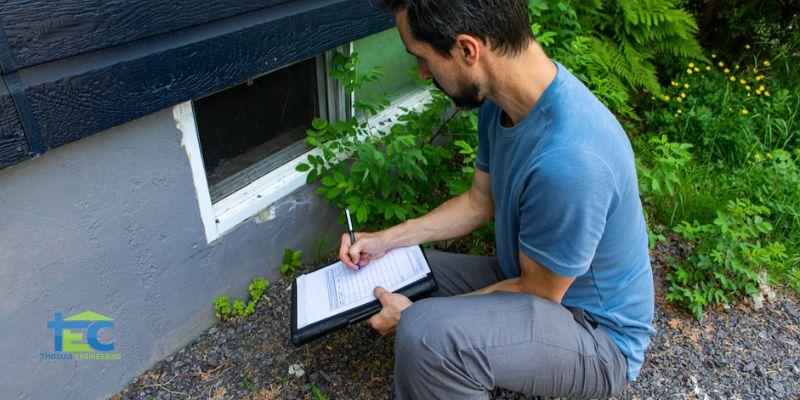
Addressing foundation problems on time is cheaper when compared with the costs associated with managing them later. Vigilance is needed to detect problems such as bouncy floors, wall cracks, and sunken landscaping. Taking action helps prevent bigger problems later on. Identifying the obvious ones, as well as the hidden signals, can be helpful.
What Are Common Foundation Issues?
When it comes to housing, foundations differ significantly. Foundations range from basement foundations to crawlspace stem walls, concrete slab foundations, wood foundations, and pier and beam foundations. The foundation type has specific problems as well as external factors that have a significant impact on them.
For instance, higher annual precipitation increases the risk of foundation wall damage. The usual issues are the breakdown of the foundations or subsidence, cracks on the floor, gaps in the foundation, slanted floors, cracks in walls, a leaning chimney, and doors that stop opening or closing properly.
Signs and Symptoms of Foundation Issues

If there are foundation issues on your property, signs will be manifested. Some of these signs may be obvious, while others are not. To ensure that your foundation does not deteriorate and result in costly damage, here are some signs you can look out for:
1. Internal wall cracks
Many cracks in interior walls may look insignificant compared to exterior ones. Plumbing leaks, for instance, can affect, to some extent, drywall that is not very strong to start with, the same as it happens with humidity. Despite this, the response to these issues may not be as complicated as solving a foundation problem.
Additionally, if walls show that they are crumbling down, bowing, or sagging, it signifies a problem that stems from the foundation. Cracks that run diagonally, those across the floor or ceiling, and peeling wallpaper are other indications of foundation issues. Recognizing these signs and addressing them quickly is essential for preserving the integrity of the building.
2. External wall cracks

It is common to notice hairline cracks on exterior walls that sometimes do not signify severe foundation issues. Yet, if such cracks appear in a large, zigzag manner or you see your house bulging at its foundation, you have more serious problems here. However, this type of sign should be carefully observed, as it will help identify the potential issue’s degree.
Usually, settling vertical cracks will rarely cause great disturbance, but horizontal ones are more complicated. Warning signals calling for expert review are rapid crack widening and bows, shifts, or deflections. It is, therefore, vital to observe these signs early enough to act quickly on structural problems that could arise.
3. Counters or cabinets separating from the walls
One of the consequences of foundation problems is that the floors and walls become uneven. Although it may not be apparent just by looking at the cabinets and countertops, there is more to consider.
Detachment or slanting of these previously secured parts to the wall or level with the ground should not be taken lightly because they indicate foundation defects. It would help if you acted on such matters as soon as possible to avoid further damage to the structure and maintain the stability of your house.
4. Bouncing floors
Dropping, creaking, or bouncing floorboards can mean foundation problems or something to do with them and, therefore, need immediate inspection. Bouncing in finished spaces could indicate a settled floor system or failing structural beams.
Also, you must pay attention to possible cracks on concrete slab floors common in basements or crawl spaces. Quickly handling these problems will avoid additional damage and ensure your home remains stable.
5. Cracked or warped siding
Siding issues are also caused by moisture, weather occurrences, or pest infestations, apart from foundation problems. Such problems in the foundation can be indicated by spaces between planks, wide gaps and separations on the outside, exterior walls, and spaces between siding with a window or door frame, respectively.
Such openings may give way to more moisture or pests, thus making the problem worse. These concerns need to be monitored and addressed quickly to avoid causing more damage to the structure. The periodic checking for holes, cracks, and weak points susceptible to pests will boost the foundation’s integrity for a long time and support your home.
6. Mildew smell
The persistent mold or mildew smells at home may not be about the foundations alone. If you smell mildew in your basement or crawlspace, it may indicate water seeping through your foundation cracks. This may create a vicious cycle.
Moisture catalyzes decaying wood while attracting pests. Therefore, dealing with the cause of those odors is necessary to avoid continuous structure damage and unexpected intrusions that can lead to an unhealthy environment at home.
7. Sinking grounds
A key feature of homes is that they are sloped to divert rain or melted snow from the foundation to avoid moisture-related damage. The accumulation of water around your foundation raises a question regarding its integrity. Increased pooling may represent a minor issue like landscape erosion or a major one, such as the foundation sinking.
Quick remedies to these indicators will preserve the integrity of your house and avoid costly repairs to the structure. Preventive measures aimed at minimizing water accumulation and routine checks will ensure your property’s continuous integrity in the future.
Conclusion
Home maintenance requires the early identification and resolution of foundation problems. Spotting signs such as cracks, uneven floors, and water accumulation helps to act quickly. For long-term safety, it is important to do regular inspections and quick responses to prevent costly structural damage to your home.





